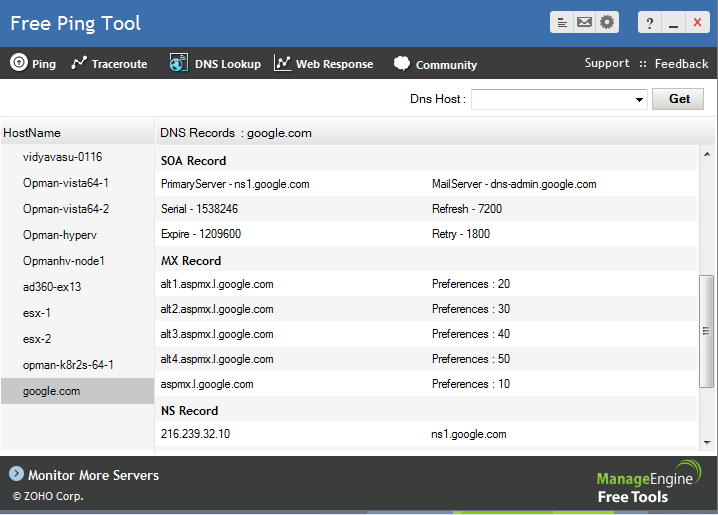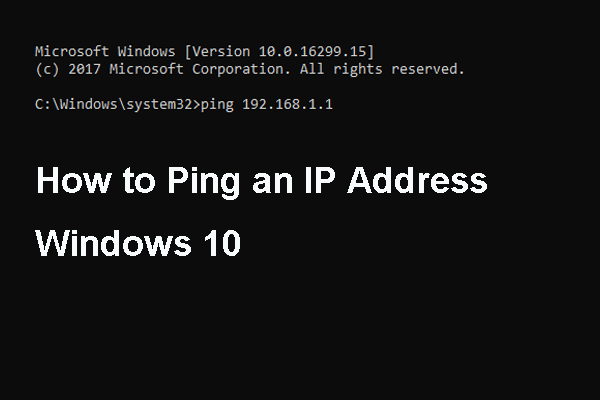

- Free ping utility windows how to#
- Free ping utility windows mac os x#
- Free ping utility windows software#
- Free ping utility windows windows#
For most programs, four pings is sufficient to get a representative average latency. Here you can type the hostname or intended IP address as well as establish how many pings you’d like to send.
Free ping utility windows mac os x#
”Īlternately, Mac OS X users can open the Network Utility and navigate to the “Ping” tab. The command will take one of two forms: “ping ” or “ping. Linux users can open the terminal from the applications menu (often found within the accessories folder), or if they run Ubuntu, they can launch the terminal using the shortcut Ctrl + Alt + T. Mac users can open the Terminal from the Utilities folder within Applications.
Free ping utility windows windows#
Windows users can search “cmd” on the Start taskbar search field or Start screen. Take the following steps to ping an IP address.
Free ping utility windows how to#
While the functionality of the ping tool built into the OS is naturally limited to the ping itself-meaning it cannot perform tracking or network management tasks-IT professionals or DIY network administrators wishing to administer a cursory ping should know how to use the utility, whether to check on a single address or to get a snapshot of the network’s connected devices.
Free ping utility windows software#
Most operating systems (OS) have native ping software admins can execute from the command line. Because the ping utility operates over ICMP, which is within the networking layer of the Open Systems Interconnection (OSI) model, ping is an OSI Layer 3 utility. Ping helps ensure host availability through the echo request and echo reply ICMP message codes. It accomplishes this through the Internet Control Message Protocol (ICMP), a protocol within the Internet Protocol (IP) suite to manage operations rather than data transport. Pings are fundamental to network integrity, but the IP ping utility serves a fairly simple function: host lookup. If the ping doesn’t receive a response, the request times out, and the device that sent the ping gets an error message or notification of data loss. When the host that sent out the ping receives the pong, it can calculate the network latency, either by timing the rate of data transfer or by clocking the gap between the outbound ping transmission and the inbound pong transmission (much in the way a bat can gauge the distance of an object based on the reflection of its emitted sound waves). Upon receipt of the packet, the pinged device returns a response-called the “pong.” Transmitted over the network’s switch and router, the data packet arrives at the device with the specified address. The “ping”-a data packet-is sent out to an IP address. Ping, a program authored in 1983 by Mike Muuss, operates analogously to a sonar using echolocation. An admin can send a single ping to verify the status of an IP address, or they can execute a ping sweep, contacting a breadth of addresses (perhaps even all the addresses within a network) to get a holistic view of network device availability. A hallmark function in almost all PCs, ping helps ensure all devices with an IP address on the network are online-in other words, “pinging” certifies all devices are live, available, and performing networking operations at speed. Most network administrators are more than familiar with the ping utility. The ping utility is a basic but integral feature in network management-it monitors device availability, network latency, and packet loss within a network. Why You Should Invest in a Ping Monitor Tool I also make my case around the importance of using ping monitor software like Engineer’s Toolset ™ to enhance ping capabilities and help support your ability to provide reliable network performance. Pinging informs IT professionals about the state of their network: the availability status of all devices, latency rate of network requests, percentage of data packet loss, and more.įor this reason, it’s important to understand the history of ping and how the ping utility works.

0.0-10.Routinely conducting ping sweeps has a variety of benefits. Interval Transfer Bandwidth Jitter Lost/Total Datagrams So doing a test using a UDP is more likely to give you real results. Almost all VoIP systems use UDP for the data.

Usually people are interested in jitter because they they have VoIP going. The windows binary runs on any recent windows, and doesn't require installation. Iperf binaries exist for many platforms including windows. Have you considered using something like iperf instead? If you use the UDP test it will report packet loss and jitter for you already.


 0 kommentar(er)
0 kommentar(er)
